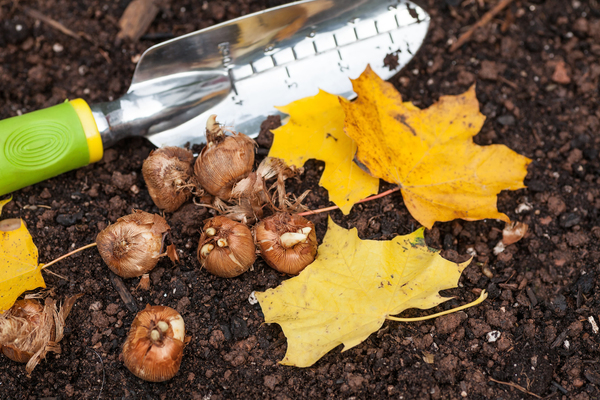The Local newsletter is your free, daily guide to life in Colorado. For locals, by locals.
Fall weather in Colorado always throws us curveballs, so it’s best to start thinking now about how to prepare your yard and garden for the winter ahead. Here’s a gardener’s autumn checklist from Colette Haskell of Nick’s Garden Center and Farm Market, a certified horticulturist with 20 years of experience in Centennial State gardening under her belt.
YARD
Thanks to a very dry fall, it’s important to keep watering that yard for a few more weeks, Haskell says. That means it’s also time for lawn aeration and reseeding while your sprinkler system is still engaged. “But your system should be drained and winterized by the second week in October, so make your appointments now because those guys will get busy.”

BULBS
“Shop now, plant later,” advises Haskell. Ideally, bulbs are planted when temperatures average 60 degrees. But if you wait until then, the selection will be dismal. Instead, hit the garden stores now for your favorite flowers and keep the bulbs in the garage until mid- to late October.
TREES & SHRUBS
Fall is a great time to plant shrubs and trees, especially if your landscaping was adversely affected by last fall’s quick-freeze. “But you really have to commit to winter watering for these new plantings,” Haskell says. Plant now (while the sprinkler is still engaged), and plan to hook up the hose at least once a week throughout the winter, depending on the temperatures. “Keep in mind the south-facing shrubs and trees will dry out faster and will require more watering over the winter months,” Haskell says. Finally, for trees with a diameter “smaller than a softball,” Haskell recommends buying paper tree wrap to prevent bark from splitting during the winter. “Wrap the trees at Thanksgiving, and take it off at Easter.”
FALL LETTUCES
Spring hail made for a challenging gardening season. If your spring garden is already finished, try planting cooler seasonal vegetables such as lettuce, Swiss chard, kale, and petunias right now. These veggies can withstand the cold temps and keep fresh salad on the menu for weeks or even months. (And yes, the petunias are edible and quite tasty, says Haskell.)
HARVEST
For those with green tomatoes or peppers still on the vine, Haskell recommends leaving them in the garden until the first frost. “When I hear Belen De Leon on 9News say, ‘This is it, it’s our first frost,’ I head to the garden with a cardboard box and a pile of newspapers,” she says. Line the box with newspaper, and place more newspaper between the layers of plucked produce. If kept in a cold, dark place, these vegetables should ripen indoors.
CLEANUP
When you’ve finally harvested all your veggies, Haskell recommends throwing away any plants that had insects, mildew, or mold and composting the remainder. Finally, use a shovel to chunk up your soil and mix in organic compost. Let it sit this way until spring. Leaving the large chunks will help moisture seep deeper into the soil.
TOOLS
Once your garden has been harvested and composted, your bulbs planted and general garden debris cleared and composted, it’s time to give your tools a thorough cleaning. Haskell recommends hosing and scrubbing off all the dirt and drying the tools immediately. After 24 hours she will spray all her tools—including the lawn mower blades—with Lysol to ensure bacteria or mold doesn’t grow over the winter. “I swear I don’t get paid by Lysol,” she says, “but I’ve had great results and I found that bleach can lead to rust.”
Once your checklist is complete, you’ve earned the right to sit back with a cup of tea and daydream about next spring’s garden—preferably with a large pile of seed catalogues.








